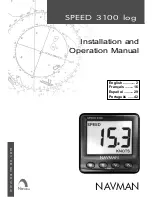
Probe Compensation
Proper compensation of the probe is required to assure good amplitude accuracy in the dynamic portions of the
waveform being measured. LF compensation matches the probe to differences in oscilloscope input capacitance.
The LF compensation should always be checked and adjusted as needed when first connecting a passive probe to
the oscilloscope input. HF compensation matches time constants within the probe to compensate for normal
component tolerances. It is typically not necessary to adjust HF compensation unless the probe is being used with
an oscilloscope with large differences in input characteristics than the oscilloscope model it was designed for.
LF compensation is performed by connecting the input of the probe to a low frequency square wave, such as the
oscilloscope calibrator signal set to 1 kHz. The compensation is adjusted by rotating the adjustment accessible
through the small hole in the center of the housing near the BNC connector. Use the tool supplied with the probe
for this adjustment.
Undershoot
Overshoot
Correct adjustment
Should HF compensation be required, access the
adjustments by sliding the black plastic cover off
the compensation housing near the BNC con-
nector. A pulse generator with low overshoot and
a 300 ps risetime is the required signal source,
along with a set of attenuators. The probe must be
connected to a terminated probe tip to BNC
adapter.
Some overshoot and ring will be present at some
settings of V/Div. Adjust the trimmer for the overall
best response on all ranges.
Typical optimum HF adjustment
PP011-OM-E Rev A
11






























